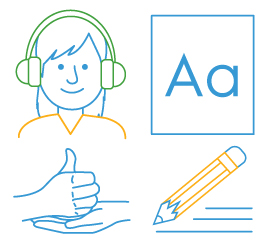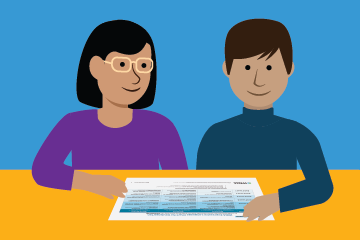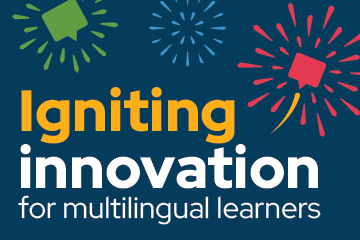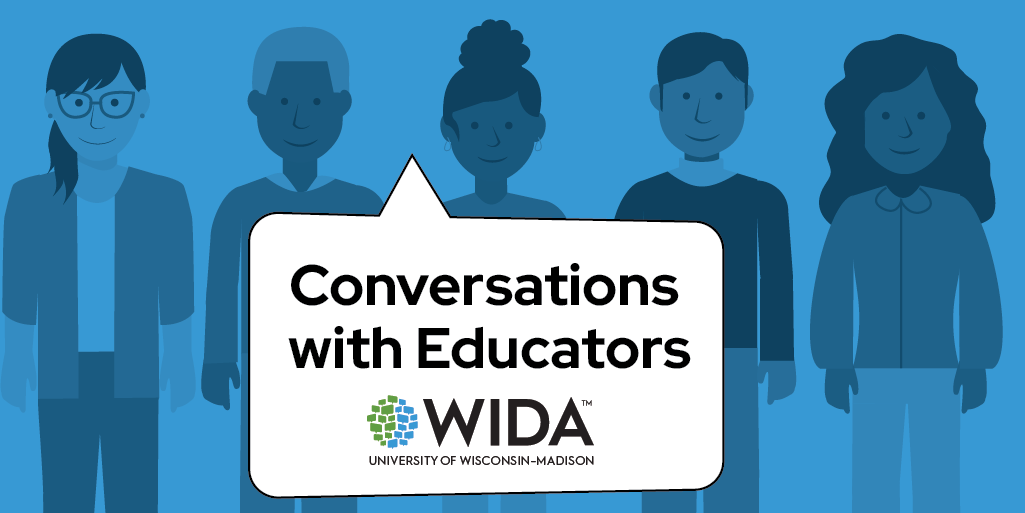Resources/Recursos
Featured Resources



All resources/Todos los recursos
Filter resources by:
Resources/Recursos
Pracademics at the Intersection of Multilingualism, Translanguaging and Transculturalism
This research brief explores the intersection of pracademics, multilingualism, translanguaging and transculturalism. It highlights how pracademics’ unique dual expertise prepares them to face pressing, real-world challenges in the diverse education settings they encounter while addressing nuances of overlapping linguistic and cultural identities. Additionally, it presents diverse voices from the field, highlighting their thoughts on the topic and the impact that pracademics has on their contexts, professional lives and experiences.
Resource DetailsReleased February 2025
WIDA MODEL Writing Rubric Grades 1-12
Rubrics are analytic scales that describe various aspects of spoken and written language to help educators recognize what speaking and writing sound and look like at various levels of English language proficiency. Use the WIDA MODEL Writing Rubric to understand the scores students earn on the assessment, analyze student performance in the classroom, and plan ways to scaffold language learning. WIDA MODEL test administrators use the WIDA MODEL Writing Rubric to assign a Writing Final score for WIDA MODEL Paper and WIDA MODEL Online.
Resource Details View Download NowReleased February 2025
Understanding the Proficiency Level Descriptors of Marco DALE
Los descriptores del desempeño lingüístico in Marco DALE provide guidance on how bi/multilingual students can develop language that they can interpret, interact and express in each of the communication modes (interpretative, interactive and expressive).
Resource DetailsReleased February 2025
Sample ACCESS for ELLs Individual Score Report (English)
This report provides information about the student’s scores on the ACCESS for ELLs English language proficiency test. This test is based on the WIDA English Language Development Standards and is used to measure students’ progress in learning English. Scores are reported as Language Proficiency Levels and as Scale Scores.
Resource Details View Download NowReleased February 2025
Sample ACCESS for ELLs School Frequency Report
School frequency reports show the number of students who've tested at each proficiency level for all domains. There are separate reports for each grade.
Resource Details View Download NowReleased February 2025
Sample ACCESS for ELLs State Frequency Report
State Frequency Reports show the number and percentage of tested students who scored at each proficiency level. There are separate reports for each grade.
Resource Details View Download NowReleased February 2025
Sample ACCESS for ELLs Student Roster Report
Student Roster Reports show individual students' domain, composite and overall scores. There are separate reports for each grade.
Resource Details View Download NowReleased February 2025
Sample Alternate ACCESS Individual Student Report for Families
This version of the report is for families and provides information about a student’s scores on the Alternate ACCESS English language proficiency test. The report contains the critical information families need to know and can be sent home with students and/or discussed at conferences with parents/guardians.
Resource Details View Download NowReleased February 2025
Sample WIDA Alternate ACCESS School Frequency Report
School frequency reports show the number of students who've tested at each proficiency level for all domains. There are separate reports for each grade.
Resource Details View Download NowReleased February 2025
Sample WIDA Alternate ACCESS District Frequency Report
District Frequency Reports show the number and percentage of tested students who scored at each proficiency level. There are separate reports for each grade.
Resource Details View Download NowReleased February 2025
Sample WIDA Alternate ACCESS Student Roster Report
Student Roster Reports show individual students' domain, composite and overall scores. There are separate reports for each grade.
Resource Details View Download NowReleased February 2025
Action Research: A catalyst for comprehensive teaching and learning in multilingual contexts
This WIDA Snapshot introduces classroom action research – when researchers and educators work together to address classroom challenges – by encouraging teachers to use their researcher voices to make meaningful contributions to the field, whether through collaborative or independent approaches.
Resource DetailsReleased February 2025
The Key Language Uses in Bilingual Writing
This WIDA Webinar examines the Key Language Uses in writing in both Spanish and English. A WIDA expert explores an analysis of bilingual writing examples and mentor texts using the lens of the Key Language Uses and los usos clave del lenguaje del Marco DALE.
Resource DetailsReleased January 2025
Building Partnerships that Support Indigenous Languages
This publication highlights collaborative partnerships between WIDA and Indigenous communities, focusing on efforts to revitalize and sustain Indigenous languages and cultures. Indigenous experts and WIDA staff share their insights on community-driven initiatives that enhance language development, assessment, and educational opportunities for Indigenous learners.
Resource Details View Download NowReleased January 2025
Sample ACCESS for ELLs District Frequency Report
District Frequency Reports show the number and percentage of tested students who scored at each proficiency level. There are separate reports for each grade.
Resource Details View Download NowReleased January 2025
Sample WIDA Alternate ACCESS State Frequency Report
State Frequency Reports show the number and percentage of tested students who scored at each proficiency level. There are separate reports for each grade.
Resource Details View Download NowReleased January 2025
Alternate Can Do Descriptors
The Alternate Can Do Descriptors (Alt Can Dos) are the first-ever Can Do Descriptors for multilingual learners with the most significant cognitive disabilities. The Alt Can Dos exemplify what students can do with communication and language at various stages of English language development.
The Alt Can Dos are arranged into the same grade-level clusters (K–2, 3–5, 6–8 and 9–12) as WIDA Alternate ACCESS. Within each grade-level cluster, the Alt Can Dos are organized by interpretive (listening and reading) and expressive (speaking and writing) communication modes for each WIDA ELD Standard and the five levels of English language development.
Resource Details View Download NowReleased October 2024
Introducing WIDA Screener for Kindergarten
This WIDA Screener for Kindergarten eSummit session recording provides an in depth look at the test.
Resource DetailsReleased October 2024
Using ACCESS for ELLs to Promote Beneficial Outcomes for English Learners Video
Released October 2024
Marco DALE Digital Explorer
This website serves as a digital database of the Marco de los estándares del desarrollo auténtico del lenguaje español de WIDA (Marco DALE). It categorizes Language Expectations in two ways: by the Marco DALE standard statement and grade-level clusters, and by the Key Language Use and communication mode. Proficiency Level Descriptors (PLDs) can be explored by grade level (K-1 and 2-12) and communication mode.
Resource DetailsReleased September 2024




